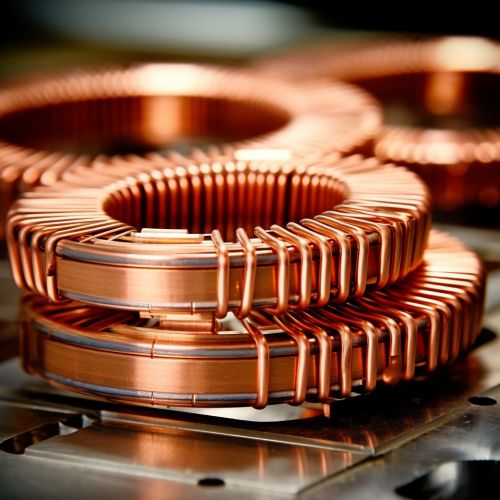Inductance
Introduction
Inductance is a fundamental concept in electromagnetism that describes the tendency of an electrical circuit to oppose a change in the electric current flowing through it. The term 'inductance' was coined by Oliver Heaviside in February 1886. It is a scalar quantity and is denoted by the symbol 'L'. The unit of inductance in the International System (SI) is the henry (H).


Basic Concept
The phenomenon of inductance is a direct result of Faraday's law of electromagnetic induction, which states that a change in magnetic field within a closed loop of wire induces an electromotive force (EMF) in the wire. This induced EMF opposes the change in current that produced it, a property known as Lenz's law. This opposition to change in current is the key characteristic of inductance.
Types of Inductance
There are two types of inductance: self-inductance and mutual inductance.
Self-Inductance
Self-inductance, or simply inductance, is the property of a circuit whereby a change in current causes a change in voltage in the same circuit due to the magnetic field created by the current. This is often observed in a single, isolated loop of wire or a component like an inductor.
Mutual Inductance
Mutual inductance occurs when the change in current in one circuit induces a voltage in another separate circuit. This is commonly seen in transformers, where a change in current in the primary coil induces a voltage in the secondary coil.
Calculation of Inductance
The inductance 'L' of a circuit can be calculated using the formula:
L = N * Φ / I
where: N = number of turns in the coil, Φ = magnetic flux through a single loop, and I = current flowing through the coil.
Inductors
An inductor is a passive electronic component that stores energy in its magnetic field. It is typically made of a coil of conducting wire. The amount of inductance in an inductor is directly proportional to the number of turns in the coil, the coil area, and the permeability of the core material, and inversely proportional to the length of the coil.
Applications of Inductance
Inductance is a crucial concept in many areas of electrical engineering and physics. It plays a key role in the operation of many everyday devices.
In Electrical Circuits
In electrical circuits, inductors are used to block or filter out high-frequency signals, while allowing low-frequency signals to pass. This property is used in devices like radios and televisions to tune into the desired frequency.
In Power Systems
In power systems, inductance is used in transformers to transfer energy from one circuit to another. It also plays a key role in the operation of electric motors and generators.
In Telecommunications
In telecommunications, inductance is used in the design of antennas and transmission lines to control signal propagation.
